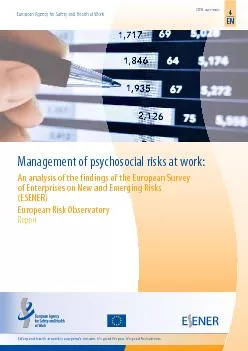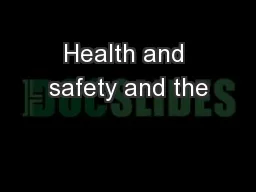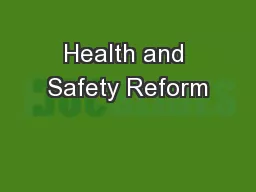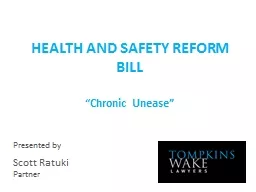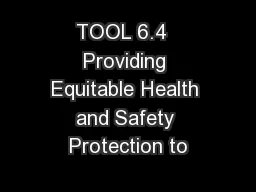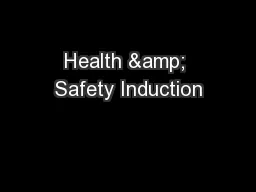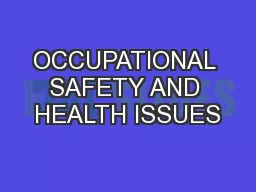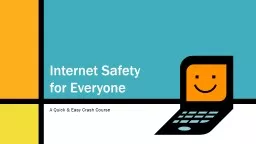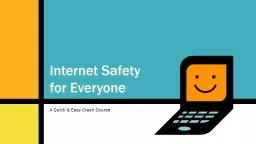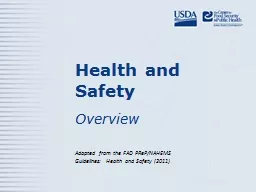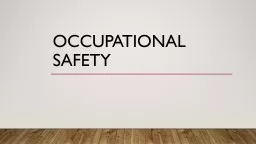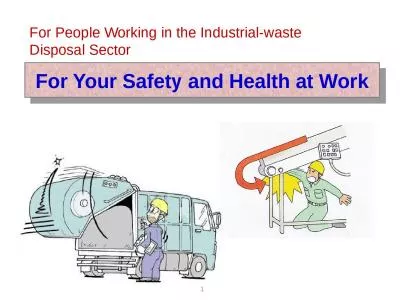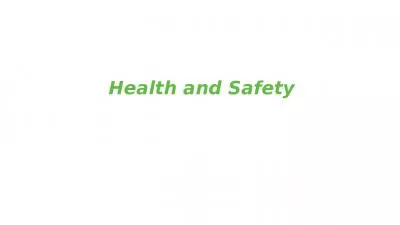PDF-Safety and health at work is everyone
Author : sherrill-nordquist | Published Date : 2017-11-21
ISSN 18319343 4 ans titre2indd 1 170912 1541 Sans titre2indd 2 170912 1541 Management of psychosocial risks at workAn analysis of the findings of the European Survey
Presentation Embed Code
Download Presentation
Download Presentation The PPT/PDF document "Safety and health at work is everyone" is the property of its rightful owner. Permission is granted to download and print the materials on this website for personal, non-commercial use only, and to display it on your personal computer provided you do not modify the materials and that you retain all copyright notices contained in the materials. By downloading content from our website, you accept the terms of this agreement.
Safety and health at work is everyone: Transcript
Download Rules Of Document
"Safety and health at work is everyone"The content belongs to its owner. You may download and print it for personal use, without modification, and keep all copyright notices. By downloading, you agree to these terms.
Related Documents

